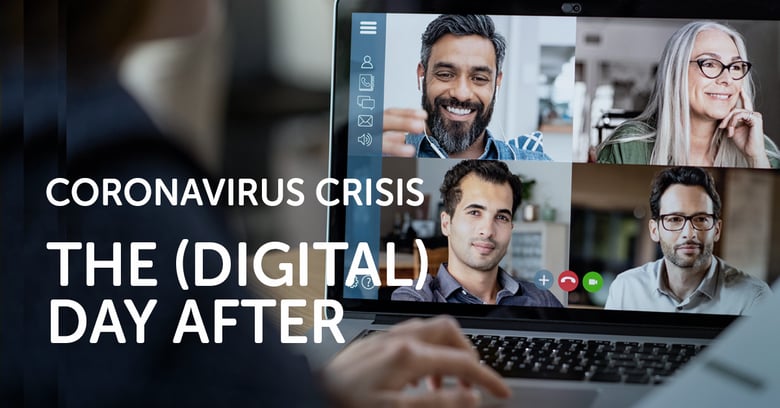For anyone in the western hemisphere, it looks like the “day after” the coronavirus outbreak is at least months away. But let’s try to think how our lives will look the day after the COVID-19 crisis ends.
One may think things will go back to exactly the way they were before. But it is safe to say that in some aspects our lives will look a bit (or even a lot) different. One of those aspects is our digital lives.
Today, a large portion of the world’s population is forced (or chooses) to stay at home. Businesses, schools, healthcare and social activities are migrating from the “real” physical world to the virtual world.
The fact that we can do almost any activity without leaving home comes as a bit of a surprise to many of us. Work meetings, school classes and doctor appointments are becoming virtual events. Even gatherings of family and friends are done now via video collaboration.
Applications like Zoom, Slack & Microsoft Teams are experiencing a huge uptake in daily active users, while other applications such as Houseparty simply have been resurrected.
Though not without hiccups, current connectivity infrastructures as well as video and collaboration platforms are “stretching but not breaking” to accommodate this incredible surge of demand.
In an earlier post we described some of those trends with regards to networking infrastructure.
The question now is: what will happen when we go “back to normal”?
Will our work and leisure habits go back to the way they were before the crisis? Will we go back to commuting to work and school every day? Will we go back to traveling abroad for business meetings? Will we go back to visiting our friends and family in person?
I guess the answer is, to some extent, yes. There is no real alternative to the human touch, to face-to-face meetings, and to social interaction.
But – and this “but” has a huge impact on networking infrastructure – in some cases we have grown accustomed to doing things remotely. In fact, lots of us have been deeply exposed to the myriad options of doing things remotely. In fact, most of us have become better equipped and more skilled now in remote collaboration, work, learning, health and even socializing. These facts will probably result in higher-than-expected growth in online video and collaboration services, even when the current crisis is in the past.
Apropos work meetings, business air travel has taken a tremendous hit, and is expected to experience a double-digit decline even after things calm down.
What does this all mean for mobile and fixed network operators and service providers?
It means that when everything goes “back to normal” and subscribers go back to work and school, they will still need to support a much higher base level of activity requiring consistent high-speed connectivity.
True, the use of online collaboration and video will be much lower than today. But it will still be much higher than it was the “day before.”
And with all crisis-related grace measures (e.g. Netflix and YouTube reduced resolution) no longer in play, customers will expect the best service. Networks needs to be prepared for that!
May the “day after” arrive sooner than later.
To learn about Ceragon’s flexible wireless hauling solutions


